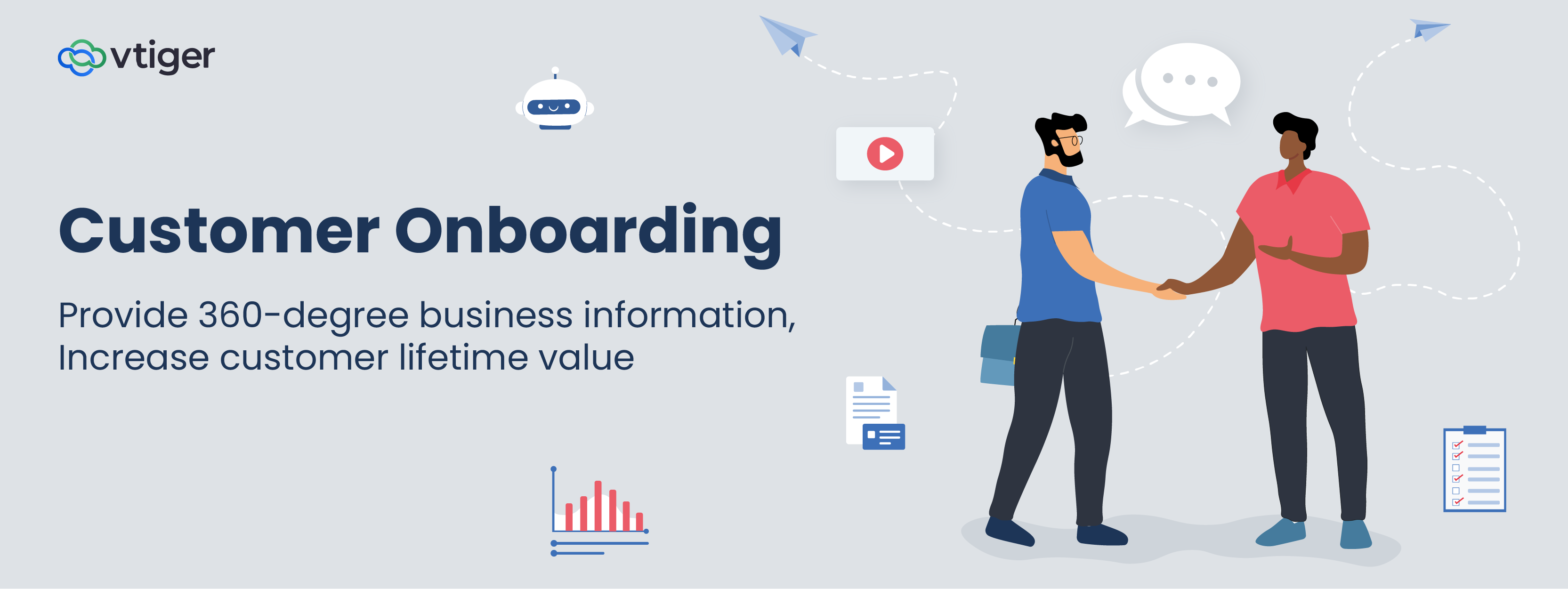Turning a prospect or an opportunity into a customer is a challenging task. But what is more difficult is retaining customers for a long time. Imagine your customer has become a part of your business but needs to learn how to use your product or services.
To make it clear, let me give you an example.
Let’s consider you have a gaming app company. One of your valued customers encountered an issue while downloading a gaming application on their laptop. Despite reaching out to your support team via email and phone, they did not receive a response and thus became furious.
So, what steps could you have taken to avoid this situation? You could have provided 360-degree information about your business right after you closed the deal.
Yes, you heard that right. It is essential to inform your customers about your business through customer onboarding.
What is customer onboarding
Customer onboarding is the process of guiding new customers on how to use a product. It requires a series of actions taken by organizations and educating them about your business so that they can utilize it to its full potential.
The goal of customer onboarding is to make them understand the benefits of using your product, walk them through the feature, give a demo on how to use it, and more.
Poor customer onboarding may lead to customer churn, affecting organizational goals, revenue, low reputation in the market, etc. Customer churn happens when customers
- Feel less valued
- Find it difficult to use the product
- Face bad customer service
- Feel overwhelmed because of too many features
And the list goes on!
Now, what can be done to reduce customer churn and improve customer onboarding? Let’s delve into that deeper.
5 tips for smooth customer onboarding
You may think your product is better, but if you do not show them how it will benefit them, they may leave and look for other options in the market. Here are a few suggestions to improve your onboarding experience:
Develop a clear onboarding strategy
Have a clear plan with defined goals and steps involved in onboarding. You can send a personalized welcome email thanking them for choosing your product and services. You can also include a brief overview of their expectations from the onboarding process.
Conduct training
One of the suitable ways to provide a superior onboarding experience is by conducting training. Use a Learning Management Software (LMS) to create and publish courses ideal for your customers.
You can provide information in different learning formats like recorded live training sessions, video tutorials, infographics, etc., and allow users to choose the learning format.
LMS also allows you to create customized courses that best fit their needs. You can track the learning progress and get better insights. Finally, you can provide certificates or badges once they complete the course successfully.
Do you want to implement LMS for your business?
Create a self-service portal
The knowledge base is the best self-service portal you can provide your customers. Prepare a knowledge base for your customers and give access so that they can check for information at their convenience. This will reduce dependency on the support reps and they will be able to resolve queries quickly.
You can add content such as how-to -articles, user manuals, FAQs, etc. This way, you can improve customer satisfaction and reduce the workload on your support reps.
Offer 24×7 support
Let AI take the brunt of responding to your queries. Implement a chatbot and prepare pre-determined answers for frequently asked questions. Chatbot will trigger responses in your absence. Enable real-time conversations by doing live chat.
Collect feedback
It’s important to understand how customers feel about your business. The best way to collect feedback is by conducting a survey. You can create online in-person surveys using tools like the Vtiger Survey module. You can also understand customer engagement by monitoring social media and tracking reviews.




